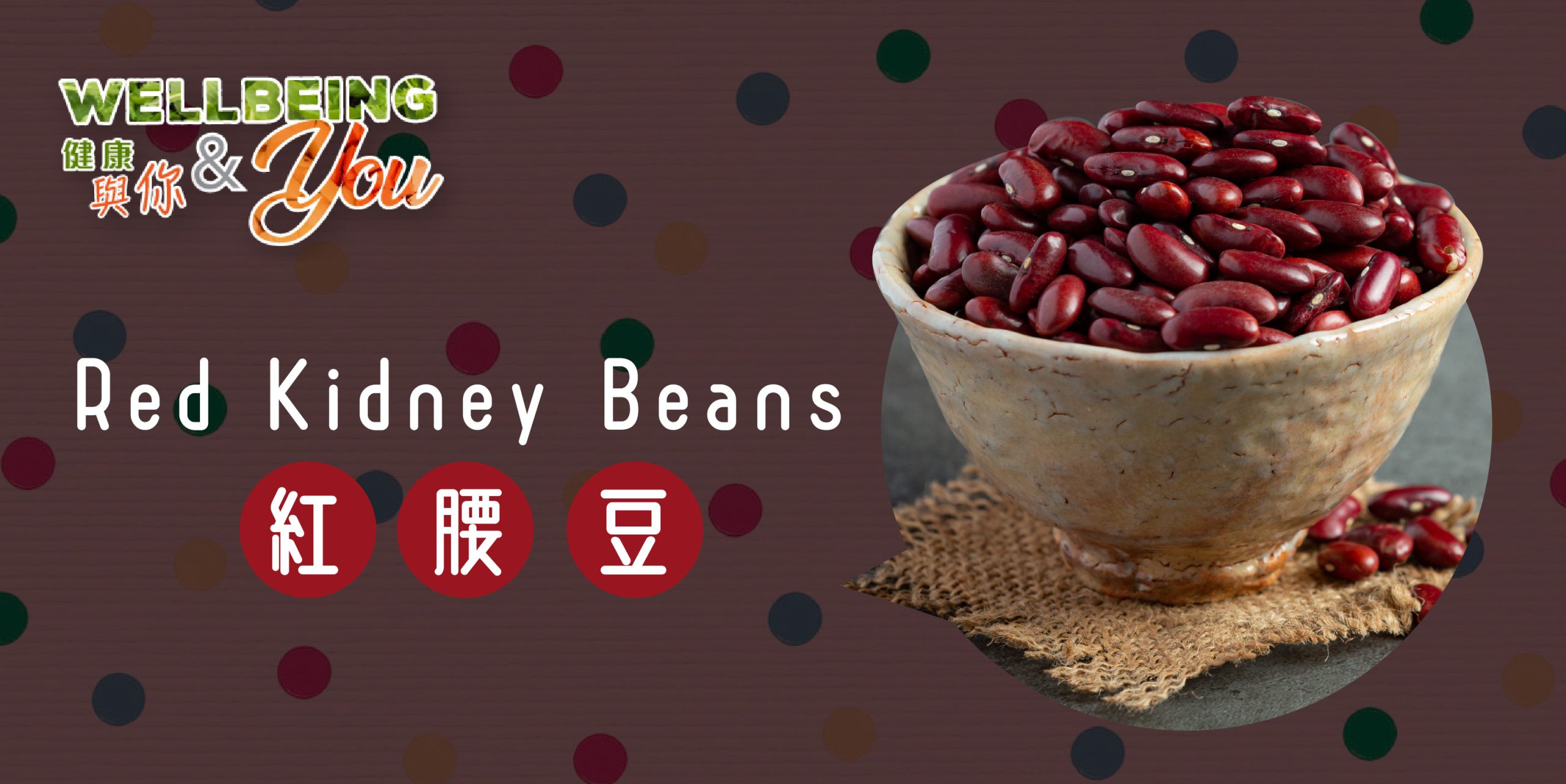[Wellbeing & You] Red Kidney Beans

Eat Seasonal
Red kidney beans sold in grocery stores are either canned or dried, the fresh version is however rarely seen in the market. Does it make you wonder what red kidney beans fresh in the pods look like and what time of the year they are planted and harvested?

Depending on the climate of the region they are cultivated, red kidney beans are usually sowed in February to March and harvested in 100 to 140 days. Beans can be air-dried after harvested, and then stored in airtight containers placed in cool, dark, dry places. Like canned beans, dried beans are safe to eat after years when stored well, but their nutrient content does start to drop after 2 to 3 years of storage.
Nutrition
Beans are considered to be one of the protein foods in our diet because of its good protein content. Each cup of cooked kidney beans (177g) provides 15g of protein which is equivalent to the protein in two eggs. Protein is the building block of our body, from simply repairing and building the cells and tissues we need, to synthesising functional enzymes, hormones, immune cells that carry out specific work throughout the body.
More than being just a protein food, beans are an excellent source of dietary fibre! We can get almost half (11g, 45% daily value) of the dietary fibre we need in a day from one cup of cooked kidney beans alone. What makes it even better, there are 4g of soluble fibre out of that total amount. Soluble fibre is particularly heart healthful, since it is a nutrient that helps lower our cholesterol level to reduce the risk of having plaque built up and blocked our blood vessels.
Besides the wholesome macronutrient contents, many of us may not aware that beans are also good sources of various micronutrients. To endorse the nutritional benefits and promote inclusion of beans in our diet, the United Nations has designated February 10 of every year to be World Pulses Day since 2018. Pulses are edible seeds of pod-bearing plants, including dry beans, lentils, dry peas and chickpeas. Having pulses more often can boost our intakes of different vitamins and minerals. For examples, every cup of cooked kidney beans offers more than 10% daily value of vitamin B1, B6, B9 (folate), K, iron, magnesium, potassium, zinc, copper, manganese…etc. These micronutrients although are only needed in small quantities, they usually support more than one body function. Take iron and copper for instance, they are known for their roles in red blood cell formation and brain development respectively, but they are both key nutrients to maintain our immune function too.
All macro- and micro-nutrients are equally important in maintaining good health, and kidney beans are remarkably nutritious that can enhance our nutrition intake comprehensively.
Sustainability
Pulses not only bring nutrients to us, but also add nitrogen back to soil to improve its fertility. This unique nitrogen-fixing property helps keep our farmlands healthy and sustainable without the use of synthetic fertilisers. Additionally, pulses have a low water footprint that further supports their role as an earth friendly crop. Start replacing some animal protein with pulses in our diet to make a difference to our own health and our planet all at once.
Healthy Dish Idea
Comforting Seven Bean Stew
| Ingredients |
| · 1 cup dried mix beans (green lentils, pinto beans, navy beans, black eyed peas, red lentils, kidney beans, black beans) · 2 tablespoons olive oil · 1 medium yellow onion, diced · 1 clove garlic, diced · 2 stalks celery, chopped · 1 can (800g) diced tomatoes · 3 tablespoons tomato paste · 4 cups vegetable stock · 2 cup water · 2 teaspoons chili powder · Salt and pepper to taste |
| Method |
| 1. Rinse dried bean mixture, and then add them to a large bowl and add enough cold water to cover them by a several inches. 2. Allow the beans to soak for at least 12 hours, and then drain and rinse well. Set aside. 3. In a large soup pot, heat the olive oil over medium high then add the onion, celery, and garlic. 4. Cook and stir regularly until the onion becomes translucent, about 5-7 minutes. 5. Add drained beans, tomatoes, tomato paste, chili powder, vegetable stock and water. Bring mixture to boil and then reduce heat to medium low and simmer, stir occasionally, for 1 hour and 30 minutes or until the beans fully cooked and softened. 6. Season with salt and pepper. |


References
- Nutrition Data – Beans, kidney, all types, mature seeds, cooked, boiled, without salt Nutrition Facts & Calories. Available at: https://nutritiondata.self.com/facts/legumes-and-legume-products/4297/2 . Access on 11Jan2023.
- National Today – World Pulses Day. Available at: https://nationaltoday.com/world-pulses-day/ . Accessed on 11Jan2023.
- The simple green – Recipe: Comforting Seven Bean Stew. Available at: https://www.thesimplegreen.com/seven-bean-stew/. Accessed on 11Jan2023.

